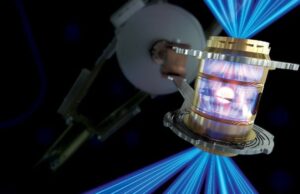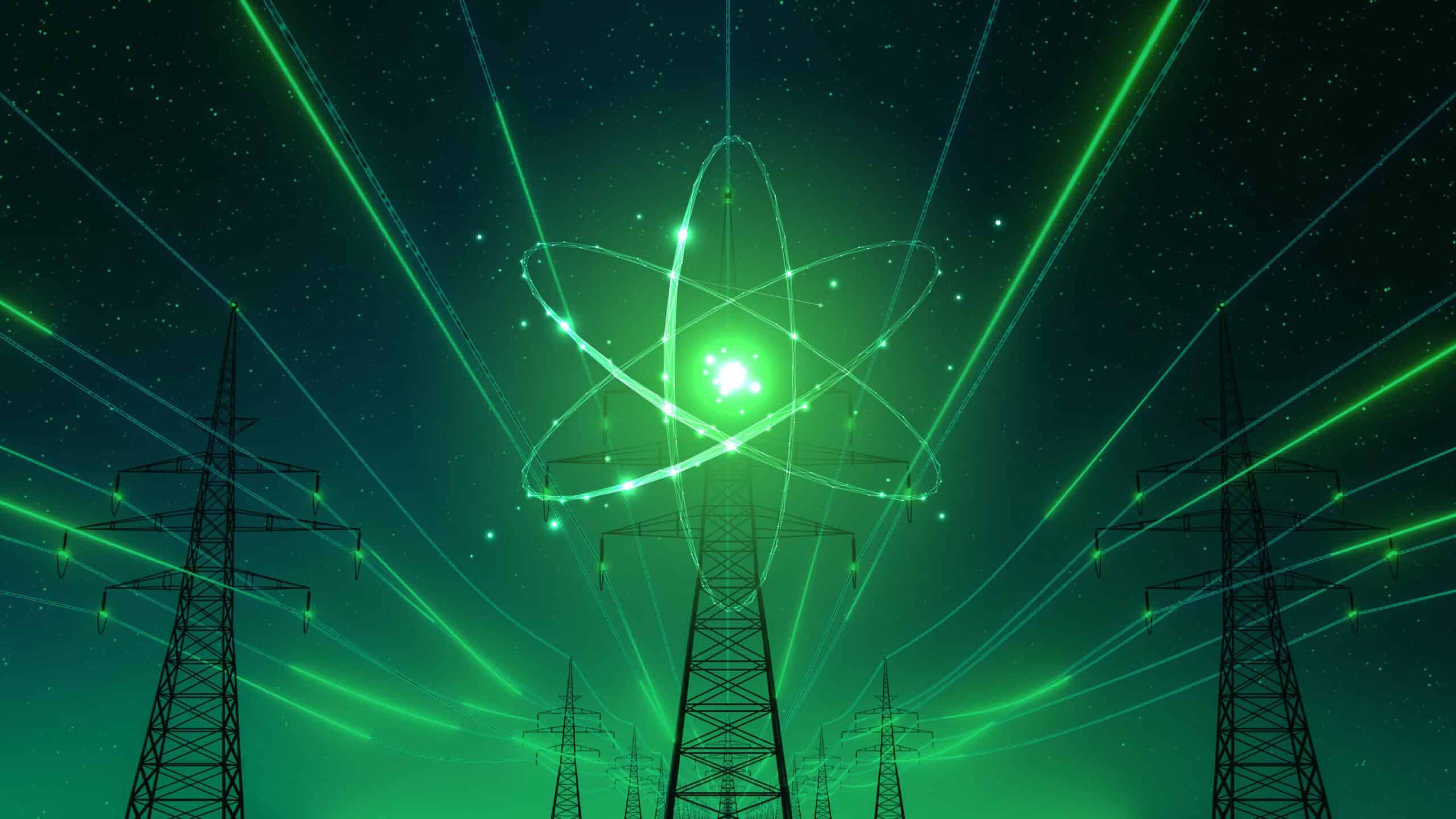Energy Sustainability for a Safer, Smarter, Cleaner World

By John Heller, CEO Amentum
Introduction
For the U.S. to maintain its role as the leading industrial nation, every arm of the federal government has recognized the need to address climate change and the risks this poses to our national and economic security.
As a nation, we don’t only need to alleviate and slow down the effects of climate change, we also should take the lead in adapting to a new world order that includes more volatile weather events, displacement of people, challenges in transportation and agriculture infrastructure, and impacts to our defensive posture. To ensure our country is ready for tomorrow’s world, we need a more complete approach that includes an energy efficiency strategy, energy sustainability initiatives, and the transition to safer, smarter, cleaner energy technologies.
Reliable Energy Sources Lead to a Safer World
When we look at the U.S. energy infrastructure today, it has largely passed its design life. In 2021, the American Society of Civil Engineers conducted a study on America’s infrastructure[1], giving it a C- grade. An attributing fact was that the majority of the transmission and distribution lines have exceeded their 50-year life expectancy. In short, that same energy infrastructure, well past its prime, is now expected to handle increased demands and under constant pressure to expand.
 Another significant vulnerability to our energy infrastructure is IT failures and cyberattacks. The Department of Defense (DOD) is one of the world’s biggest institutional consumers of energy, exceeding entire countries like Sweden and Portugal, so it comes as no surprise that our energy grid is the country’s most cyberattacked framework. To improve reliability, a movement to independent resilient grids is the wave of the future.
Another significant vulnerability to our energy infrastructure is IT failures and cyberattacks. The Department of Defense (DOD) is one of the world’s biggest institutional consumers of energy, exceeding entire countries like Sweden and Portugal, so it comes as no surprise that our energy grid is the country’s most cyberattacked framework. To improve reliability, a movement to independent resilient grids is the wave of the future.
The DOD has plans to move their bases and installations from public grids to on-base power generation systems and a microgrid infrastructure. These plans include use of technologies that will be both resilient and independent, assuring uninterrupted power to support their defense efforts and their most critical missions.
Similarly, the DOD is motivated to eliminate reliance on the world’s energy system for overseas forward-operation bases. With increased risks and vulnerabilities associated with operating in an international theatre, the DOD is exploring the use of small modular reactors.
Improving our energy resilience, microgrid infrastructure and technology upgrades is critical. Our nation needs to build the infrastructure that could control, integrate and manage power loads from multiple energy sources, condition that power output, and manage the battery storage and charging associated with the grid. This is a key technical capability that needs further development to support independent energy systems.
Smarter Technology for Energy Sustainment
Combating climate change will require new technology development and maturation in the renewable energy sector in areas such as solar, wind, thermal, hydro, hydrogen, and nuclear.
In the case of hydrogen clean energy, technology development to safely and efficiently generate, store, convert and transport hydrogen is already underway with a number of industries, universities and labs within the United States.
Another viable source of sustainable, clean energy is nuclear. Nuclear fission is the technology process in nuclear power plants that operate in the U.S. today. Fission occurs when a neutron slams into a larger atom, forcing it to excite and split into two smaller atoms causing tremendous amounts of energy. Small modular reactors (SMRs) also use nuclear fission technology.
 Both the Department of Energy (DOE) and the DOD are exploring SMRs as an alternative clean, carbon free energy source that offers greater flexibility and scalability than traditional larger energy power plants.
Both the Department of Energy (DOE) and the DOD are exploring SMRs as an alternative clean, carbon free energy source that offers greater flexibility and scalability than traditional larger energy power plants.
The DOE is pursuing SMRs to support remote locations providing individual or groups of independent energy grids. SMRs offer the DOD both energy independence and resiliency, and the DOD sees the value of deploying SMRs across their military bases. They’re also looking at SMRs as a mobile energy option for forward operating bases and deployments to curtail their reliance on local energy grids.
Although still decades from being operationalized, a more powerful source of clean nuclear power is fusion energy. Late last year, DOE announced a scientific nuclear energy breakthrough by producing a fusion energy output higher than the laser energy absorbed by the fuel to initiate it. This major scientific accomplishment, which demonstrates the fundamental scientific basis for inertial fusion energy, was made at the National Ignition Facility, located at the Lawrence Livermore National Laboratory, and was decades in the making.
Fusion is the process by which two light nuclei combine to form a single heavy nucleus, with the excess mass converting to and releasing a large amount of energy. There is more work ahead to harness the potential of fusion energy, build public confidence in its safety, and develop it as a new clean energy source in decades to come.
Energy Sustainability Relies on Clean Energy
One of the challenges we must address is that existing U.S. energy infrastructure is not configured to handle the additional power loads that are delivered by new, sustainable clean energy sources. Recently passed government incentives and recent legislation provides some of the financial investment required to get over the high initial cost of setting up that energy infrastructure, which has traditionally been a barrier to moving towards the sustainable energy model.
The Bipartisan Infrastructure Law includes the largest investment in clean energy transmission in American history. The investment will fund new programs to support the development, demonstration, and deployment of clean energy technologies to accelerate our transition to zero-emissions. The DOE has the mandate to provide those funds in the form of grants to industry to jumpstart efforts and demonstrate technologies associated with several clean energy initiatives.
One of these initiatives focuses on localized hydrogen hubs. Clean hydrogen hubs will create networks of hydrogen producers, consumers, and locally based infrastructure to accelerate the use of hydrogen as a clean energy source that can deliver or store massive amounts of energy.
 Hydrogen technologies aren’t new, but research and development is under way to generate hydrogen using sustainable and renewable energy technologies like solar, wind or nuclear. This allows hydrogen to be stored until converted to energy. Hydrogen gas generation through these technologies eliminate or minimize greenhouse gas emissions.
Hydrogen technologies aren’t new, but research and development is under way to generate hydrogen using sustainable and renewable energy technologies like solar, wind or nuclear. This allows hydrogen to be stored until converted to energy. Hydrogen gas generation through these technologies eliminate or minimize greenhouse gas emissions.
Even with the right technology to bring us sustainable energy sources, we can’t flip a switch and turn off our full powered plants and gas plants overnight, and a transition to a 100 percent clean energy infrastructure could be years- or decades-long. We would also need scrubbers and filter technologies that allow our existing energy facilities to capture or sequester greenhouse gas emissions being generated. Carbon capture technologies are being refined and demonstrated today, and will help until we move to a completely sustainable energy infrastructure.
Conclusion
We clearly need to strategically invest in and develop our nation’s energy strategy as a vital, foundational element of our economic and defense objectives. Our country’s energy sustainability approach should include the focus on capturing emissions today, building the clean energy infrastructure, and developing energy resilience technologies. This holistic approach will lead to a safer, smarter, cleaner world and better stewardship of our environment, not to mention improve our national security today and in the future.
[1] (2021, March 3). Report Card for America’s Infrastructure, American Society of Civil Engineers. Web – Report Card for America’s Infrastructure, https://infrastructurereportcard.org/

